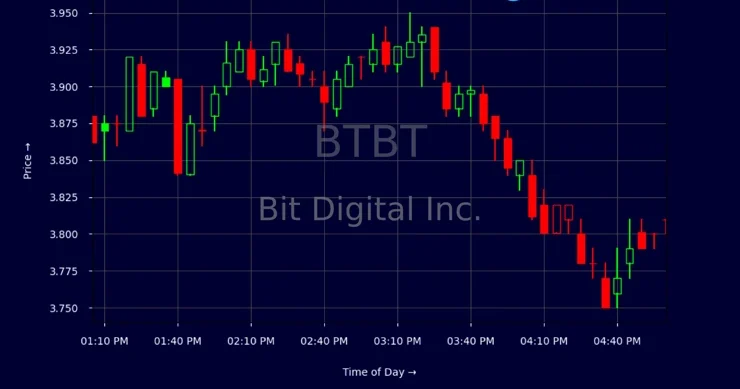In today’s rapidly evolving healthcare and laboratory environments, compliance with regulatory standards and maintaining stringent quality control measures are crucial to ensure accurate results, patient safety, and operational efficiency. Laboratories, particularly those in the fields of pathology, pharmaceuticals, and research, are bound by numerous regulations and must consistently meet quality assurance protocols. Failure to comply can lead to costly fines, loss of accreditation, and compromised patient outcomes.
To navigate these challenges effectively, many laboratories are turning to Laboratory Information Management Systems (LIMS). LIMS software offers comprehensive tools to help labs streamline compliance management, enforce quality control standards, and enhance overall laboratory performance. In this article, we explore how LIMS software can play a pivotal role in ensuring compliance and maintaining high standards of quality control in laboratories.
What is LIMS Software?
A Laboratory Information Management System (LIMS) is a software platform designed to manage and automate laboratory operations, including sample tracking, data management, workflow automation, and reporting. LIMS integrates all laboratory activities into a single system, ensuring that data is accurately captured, securely stored, and easily accessible for compliance and quality control purposes.
How LIMS Software Enhances Compliance and Quality Control
1. Ensuring Compliance with Regulatory Standards
Compliance with regulations such as HIPAA, CLIA, ISO 15189, and FDA 21 CFR Part 11 is mandatory for laboratories. LIMS software helps labs adhere to these standards by providing tools for secure data management, audit trails, and automated reporting. By maintaining accurate records and ensuring that the data is properly documented, LIMS helps laboratories meet the stringent requirements set by regulatory bodies.
- Example: LIMS automatically generates audit trails, tracking every action taken within the system. These trails ensure that all sample handling, data entry, and result modifications are fully documented and easily accessible in case of an inspection.
Key Benefit: LIMS streamlines compliance by automating record-keeping, data entry, and reporting, ensuring that labs remain compliant with industry regulations and avoiding penalties.
2. Comprehensive Audit Trails and Traceability
One of the most critical compliance requirements is maintaining a complete and accurate audit trail. Audit trails provide a transparent record of every action performed on a sample, from its arrival in the lab to the final test result and report generation. LIMS ensures that every transaction is logged with date, time, and the identity of the personnel involved, making it easy to trace any changes made to the data.
- Example: If a lab technician updates the test result for a sample, LIMS records the change, including the technician’s name and the timestamp. This detailed history is vital for compliance audits.
Key Benefit: LIMS offers traceability and transparency, allowing labs to maintain compliance with audit requirements while ensuring data integrity.
3. Automated Reporting for Compliance
Reporting is a crucial aspect of laboratory compliance. LIMS software can automate the generation of regulatory compliance reports, such as test result reports, quality control logs, and audit trails, eliminating the need for manual data compilation. These reports can be customized to meet the specific needs of regulatory agencies and internal quality control guidelines.
- Example: LIMS can automatically generate a report that includes all the required information, such as test results, control limits, and corrective actions taken, ensuring that labs can quickly submit reports to regulatory bodies.
Key Benefit: Automated reporting ensures accuracy and saves time, ensuring that labs can consistently meet regulatory deadlines without the risk of human error.
4. Real-Time Monitoring of Quality Control (QC)
Quality control is the foundation of accurate and reliable laboratory testing. LIMS software allows labs to monitor QC data in real-time, ensuring that all tests meet predefined quality standards. LIMS can track and document QC data such as reagent performance, instrument calibration, and environmental conditions, helping to identify and resolve issues promptly.
- Example: A LIMS system can monitor the calibration status of lab instruments and automatically notify technicians if calibration is due or if a deviation from the required specifications is detected.
Key Benefit: Real-time QC monitoring ensures that labs maintain consistent testing standards, reducing the risk of inaccurate results and improving overall testing reliability.
5. Standardization of Testing Procedures
LIMS ensures that laboratories follow consistent testing procedures by automating test assignments, providing standardized protocols, and enforcing compliance with these procedures. This standardization reduces variability between tests, ensuring that each sample is processed under the same conditions and that all results are comparable.
- Example: When a sample is logged into LIMS, the system automatically assigns the correct protocol based on the sample type and test requirements, ensuring that every technician follows the same steps for each test.
Key Benefit: Standardized testing procedures ensure consistency and reliability, making it easier for labs to meet both regulatory requirements and internal quality control standards.
6. Managing Corrective and Preventive Actions (CAPA)
LIMS helps labs track and manage Corrective and Preventive Actions (CAPA), which are critical for maintaining compliance with quality standards. If a deviation or non-conformance occurs—such as an out-of-range test result or instrument malfunction—LIMS can prompt the lab to initiate a CAPA process. The system logs the issue, tracks its resolution, and ensures that preventive measures are implemented to avoid future occurrences.
- Example: If a reagent batch fails a quality control test, LIMS can initiate a CAPA process, prompting the lab to investigate the cause of the failure, implement corrective actions, and document the entire process for compliance.
Key Benefit: Managing CAPA within LIMS helps labs address quality issues promptly, ensuring that problems are resolved before they affect the integrity of testing or patient care.
7. Improved Data Security and Access Control
Data security is a critical concern for pathology labs, especially when handling sensitive patient information. LIMS software enhances data security by providing robust access control mechanisms, ensuring that only authorized personnel can access, modify, or delete data. Role-based access control allows administrators to define who can view or update specific data, ensuring that sensitive information is protected.
- Example: A LIMS system allows lab managers to assign different access levels to staff based on their roles. A technician may have access to sample data but not to patient records, while a pathologist may have access to both.
Key Benefit: LIMS ensures that data is stored securely, reducing the risk of unauthorized access and ensuring compliance with data protection regulations.
8. Continuous Quality Improvement (CQI)
LIMS software provides labs with the tools to track performance metrics and identify areas for improvement. By analyzing trends in sample processing times, error rates, and testing results, labs can implement continuous quality improvement initiatives. These insights help labs optimize workflows, reduce errors, and enhance the overall quality of their services.
- Example: A lab manager can review monthly performance reports generated by LIMS to identify recurring issues, such as delays in test results or higher error rates in certain tests, and take steps to address them.
Key Benefit: Continuous quality improvement ensures that labs stay competitive, meet regulatory standards, and consistently deliver high-quality results.
Key Takeaways
- LIMS software helps labs streamline compliance management by automating data collection, reporting, and record-keeping.
- Audit trails and traceability ensure that every action taken in the lab is logged, providing transparency and accountability.
- Automated reporting simplifies compliance with regulatory standards, reducing the risk of errors and ensuring timely submission of required reports.
- Real-time quality control monitoring ensures that labs meet testing standards and identify issues promptly to maintain result accuracy.
- Standardized testing protocols reduce variability, ensuring consistency in testing and improving the quality of results.
- CAPA management ensures that deviations are tracked and corrected, improving overall quality and compliance.
- Data security features in LIMS protect sensitive information and ensure that labs meet data protection regulations.
- CQI insights provided by LIMS help labs improve their operations, minimize errors, and enhance overall service quality.
Conclusion
In today’s regulatory-driven environment, maintaining compliance and ensuring consistent quality control are essential for pathology labs. LIMS software plays a crucial role in achieving these goals by automating processes, providing real-time monitoring, and generating comprehensive reports. By integrating LIMS into their operations, labs can improve compliance, enhance data accuracy, and optimize their quality control procedures—ultimately leading to more efficient workflows, better patient outcomes, and sustained success in the highly competitive healthcare sector.





